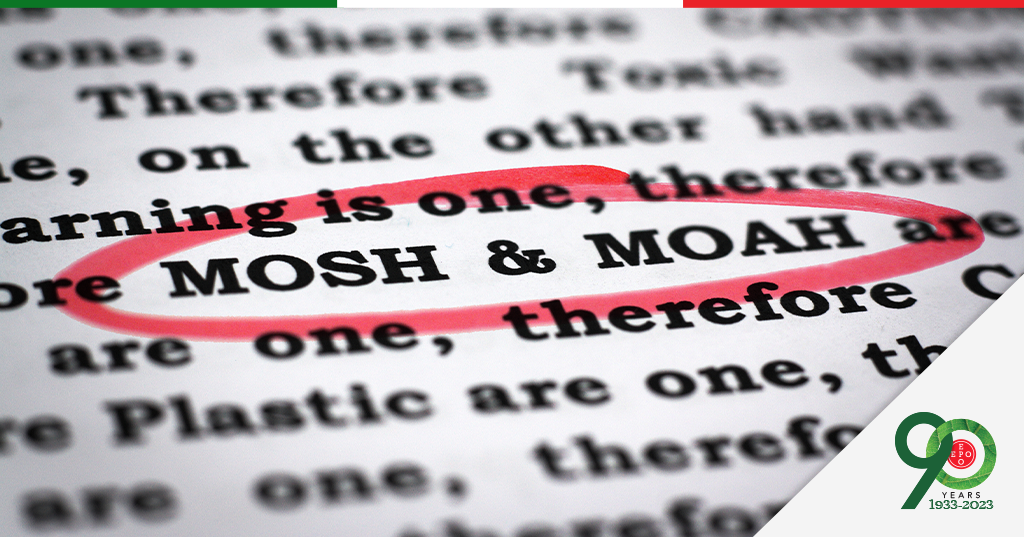
Mineral oil hydrocarbons (MOAH and MOSH) in food: the European regulatory framework
Mineral oil hydrocarbons are chemical compounds containing 10 to 50 carbon atoms, primarily derived from crude oil but also synthesized from coal, natural gas, and biomass. They are mainly used in the food industry as lubricants for machinery, release agents, technological aids, and food or feed additives. Still, they are also found in adhesives and printing inks or may originate from environmental pollution. Therefore, a risk of contamination throughout the entire agri-food supply chain, from machines that harvest and process herbs and spices to food packaging, is likely to occur.
In July 2024, the European Commission presented two proposals, one to implement a monitoring plan, and the second about sampling and analysis activities according to an official protocol to be included in Regulation (EC) No. 333/2007. A draft regulation was also adopted to establish maximum levels of MOAH for different food categories, including food supplements, dried herbs, and spices. Thus, three draft regulations regarding mineral oils are currently under review by the European Authorities.
What are MOAH and MOSH?
Mineral oils are divided into two main categories. MOAH (Mineral Oil Aromatic Hydrocarbons) are aromatic hydrocarbons for which there is evidence of genotoxicity and carcinogenicity risk, particularly if they consist of 3- or more aromatic rings.
MOSH (Mineral Oil Saturated Hydrocarbons) are another family of hydrocarbons. Although they can accumulate in organs and the lymphatic system, EFSA concluded in 2023 that, based on current data, the present dietary exposure to MOSH does not raise concern for human health.
EFSA opinions and the implementation of the regulatory framework
A 2012 EFSA scientific opinion, which highlighted the potential human health impact of mineral oils, prompted the European Commission to take concern about the presence of these contaminants in food, involving food business operators (FBOs) in the monitoring process (Commission Recommendation (EU) 2017/84 of January 16, 2017).
At the end of 2023, following the Foodwatch report on the presence of mineral oils in foods (2021) and the publication of a new EFSA scientific opinion updating previous data (EFSA Panel on Contaminants in the Food Chain (CONTAM), Update of the Risk Assessment of Mineral Oil Hydrocarbons in Food), the European Commission presented a first draft regulation to establish maximum levels for mineral oil aromatic hydrocarbons (MOAH) in food. The aim is to integrate these limits into the European Contaminants Regulation (EU) 2023/915. An update of this draft was presented in July 2024, defining specific maximum levels for certain raw materials, including spices and dried herbs (5.0 mg/kg), and also food supplements (10.0 mg/kg from 01.01.2026 and 5.0 mg/kg from 01.01.2030). Additionally, in the same period, two more draft regulations were adopted: the first to establish methods for sampling and analyzing mineral oils in food, and the second to invite Member States and food business operators to monitor the presence of MOAH and MOSH in food for the period 2026-2029. The European Commission considers such monitoring essential to introduce risk mitigation measures along the whole supply chain.
The indicative maximum levels for products of our interest in the draft monitoring regulation are as follows:
For MOSH:
- Spices, dried herbs, tea and herbal infusions, and food supplements: 15 mg/kg;
- Oilseeds and oily fruits: 5.0 mg/kg.
For MOAH:
- Tea and herbal infusions: 5.0 mg/kg.
EPO’s position
EPO Srl is constantly monitoring any development in the regulation framework related to MOAH and MOSH. Although the proposed limits do not yet have legal force, since the beginning EPO has been carefully monitoring its products, with specific analyses on Saw Palmetto (Sabal) liposoluble extracts. However, until these limits acquire legal force, EPO will not update the relevant technical documentation (analytical certificates and technical data sheets).
EPO is actively and transparently collaborating in data collection with herb suppliers and all stakeholders along the supply chain, to ensure compliance with future regulations. EPO is also available to support suppliers and customers in case of questions or if further information is needed.